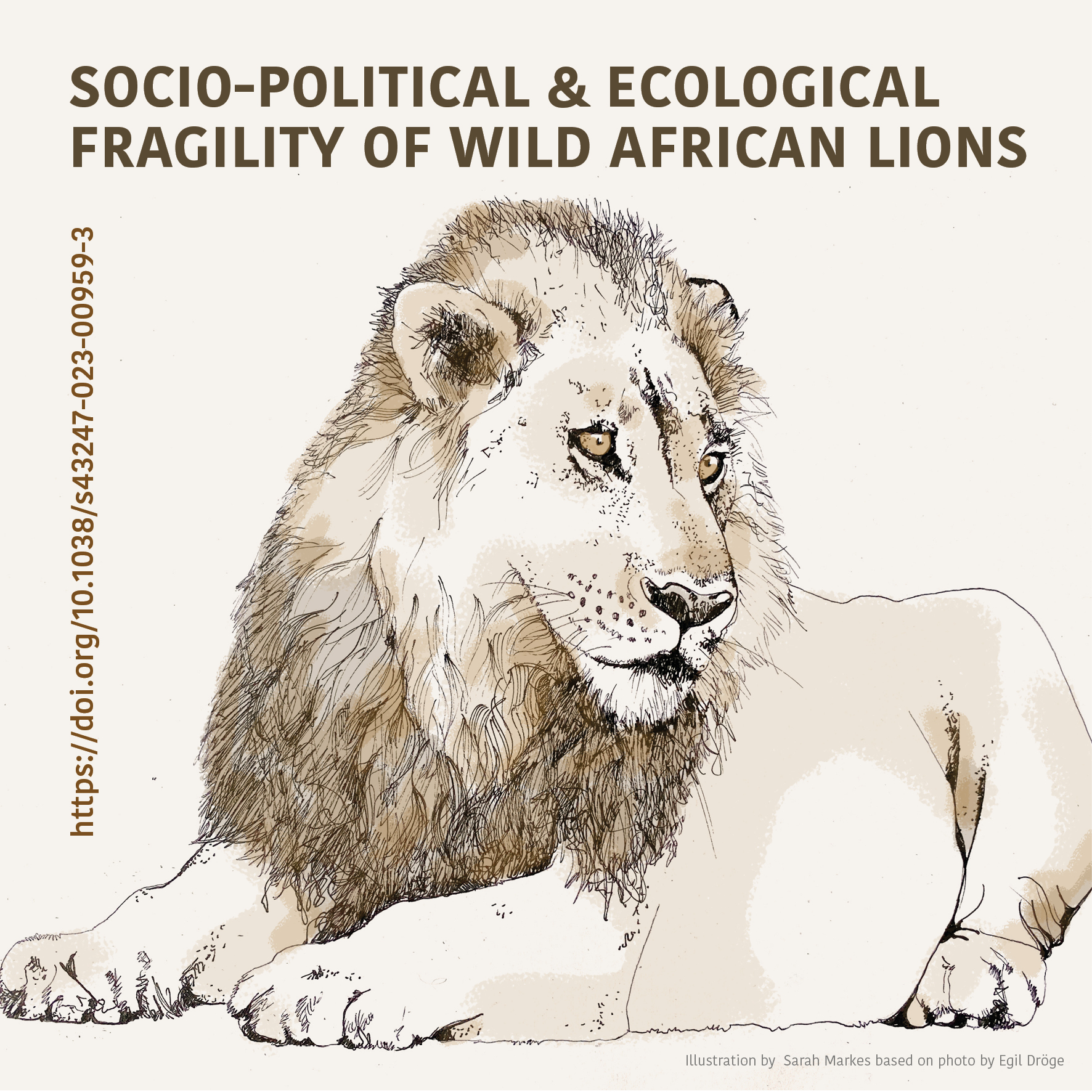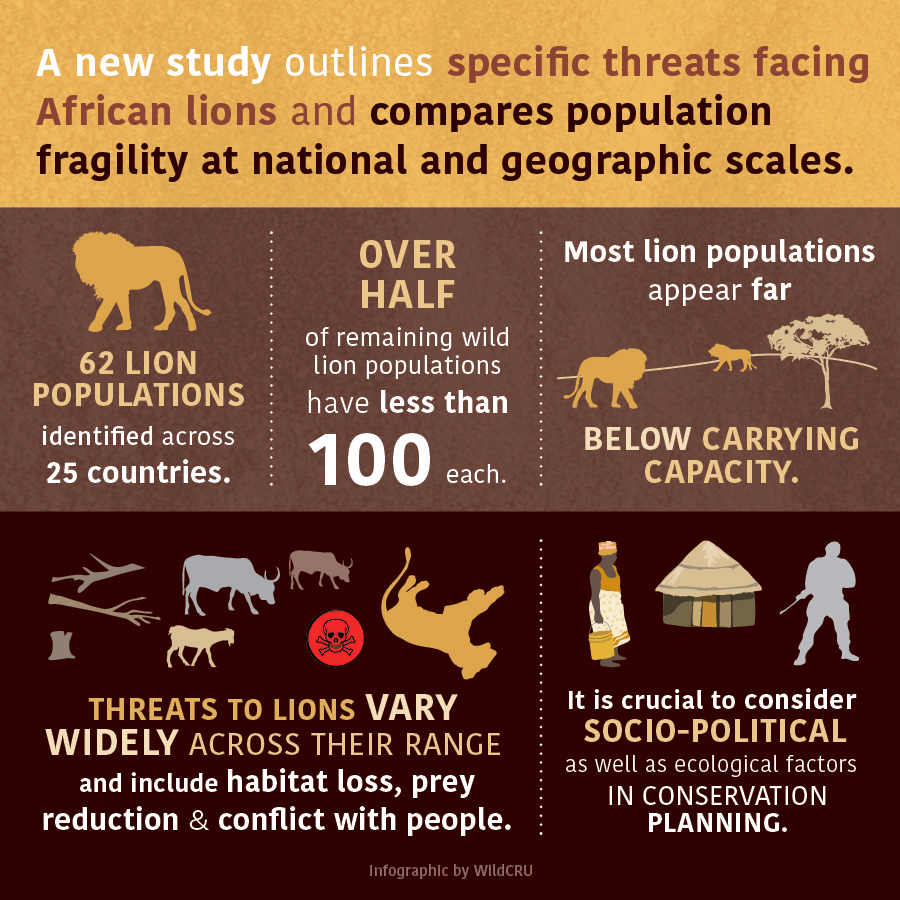News
New study assesses ecological and socio-political factors affecting wild lion population fragility across Africa
Professor Amy Dickman, along with 12 more WildCRU co-authors, Sam Nicholson and others from around the world provide new insight into Africa’s dwindling wild lion populations. It is the first continent-wide study that looks at ecological and socio-political factors underpinning threats to lions. These factors are crucial to consider in evaluating and planning conservation strategies. For example, while Sudan and Benin have similar size lion populations, Sudan’s lions are under greater threat due to war, instability and higher poverty levels which jeopardise their protection.
The study identified and mapped wild African lion populations – building on extensive monitoring in which WildCRU projects have played a major role for decades. The researchers then quantified the population fragility in terms of several ecological and socio-political factors. For example, smaller lion populations or higher densities of people and livestock were factors contributing to higher ecological fragility, while higher corruption or lower GDP per capita contributes to greater socio-political fragility. Once calculated, both socio-political and ecological factors were combined into a single overall fragility index, and each lion population was compared relative to all others. The fragility score does not suggest which lion populations deserve protection or funding. It does, however, highlight the varying ecological and anthropogenic pressures lions face and which populations may require more resources to conserve.
Conservation is more urgent than ever. Less than half of the 62 remaining populations of free-ranging wild African lion have over 100 lions. African lions remain in only 25 countries and nearly half of these nations have fewer than 250 individuals. Eight countries now have only a single wild lion population. Although lions are estimated at between 20,000 and 25,000 individuals in total, there is concern that the small populations will disappear.
Rapidly growing anthropogenic pressures on resources suggest a challenging future for lions, and wildlife in general. With human-induced threats like habitat loss, prey depletion, and human-wildlife conflict, lions are increasingly pushed to the brink. However, conservation efforts are having some success, such as expanding lion populations in Niokolo Koba National Park, Senegal, and Gorongosa National Park in Mozambique.
Almost all of Africa’s remaining lion range is within countries that rank in the 25% poorest countries in the world. Communities living alongside lions bear both significant costs and risks to people and their livestock. This research underscores the moral responsibility of wealthier nations to contribute more significantly to lion conservation and helps identify some of the factors which should be considered to make that contribution more effective.
Professor Dickman explained, “Lions are one of the most iconic species in the world but are undergoing devastating declines. This comprehensive analysis is the first to look at both ecological and socio-political risk factors facing lions at scale and demonstrates the size of the challenge. Conservation science is important to guide action, but this research highlights the invaluable role that politicians, economists, development experts and others must play if we are to safeguard lions and other biodiversity, in ways which also enable rural development rather than stand in its way.”
Nicholson, S.K., Dickman, A., Hinks, A. et al. Socio-political and ecological fragility of threatened, free-ranging African lion populations. Commun Earth Environ 4, 302 (2023). https://doi.org/10.1038/s43247-023-00959-3







